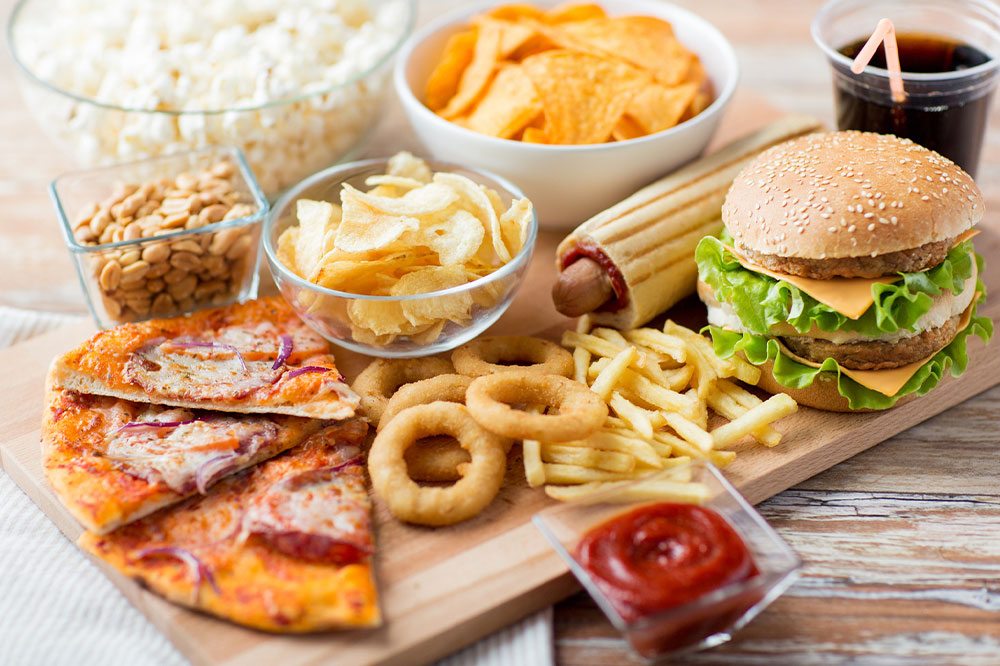9 Snacks That May Raise Cholesterol Levels

Snacks are the ultimate hunger busters; these are foods that are not as wholesome as full-blown meals but just filling enough to keep food cravings away for a while. Although snacking from time to time is not particularly unhealthy, certain snack options can increase one’s cholesterol levels. These snacks are surprisingly (and dangerously) common foods eaten by millions around the world. Here are some such snacks that spike cholesterol levels and should be avoided.
Granola bars
Granola bars are often marketed as the ultimate hunger quenchers. While they certainly live up to that tagline, granola bars are also massive enhancers of cholesterol. These crunchy, chewy foods are layered with a large dollop of saturated fats, which ensure one feels full after having these bars. In fact, even the granola bars tagged “low-fat” contain moderate proportions of saturated fats (much higher than some cereals). To stay on the healthy side, one must eat granola that is sweetened through dried fruit, maple syrup, or honey and opt for bars that have at least 20 percent of the fiber value recommended by healthcare experts.
Flour tortillas
This snack is known for its juicy, crunchy texture and great taste, but it is also a major cause of high cholesterol. Flour tortillas are one of the common components of tacos and even the much-adored whole wheat tortillas are bad foods when it comes to cholesterol as they contain higher amounts of saturated fats compared to corn tortillas. If these tortillas are not fried in butter or oil, corn tortillas make a great substitute for wheat ones. A healthy way to eat tortillas is to start with a corn tortilla made without oil or lard and add healthy toppings such as chopped lettuce, juicy tomatoes, and grilled chicken.
Pasta
This food is another staple for breakfasts or occasions when someone needs a quick meal to satiate their hunger. However, pasta is surprisingly high in cholesterol. Pasta made using meatballs and lasagna is a particularly poor choice of food for those with high cholesterol. In fact, pasta is a big source of calories and carbs too. One does not necessarily need to cut off pasta from their meals altogether, but just have it in moderation. One may choose low-calorie pasta, such as the ones made of marinara or marsala.
Cheeseburger
Dairy-based foods such as milk and cheese are bad for one’s system when it comes to cholesterol levels. When one combines that with the fried content of a burger, one gets cheeseburgers – the perfect recipe for cholesterol spikes. Frequently consuming cheeseburgers can be problematic for one’s heart, kidneys, and circulatory system as the food is loaded with calories and saturated fats. Cheeseburgers are delicious and filling, which makes them popular takeaway foods and snacks, but one must only consume them (in moderation) if they do not have high cholesterol or cardiovascular problems.
Cakes
The popularity of cakes and pastries is understandable – they are delightfully soft and delicious. However, commercially baked goods such as cakes and pastries are loaded with refined sugars, which are arguably the worst food elements for the human body. These foods, along with donuts, cakes, and cookies, are loaded with fats and calories too. So, when eaten in large amounts, they can seriously affect the process of blood circulation in one’s body. Therefore, even if one has a sweet tooth, one must limit the intake of cakes and other commercially baked foods.
Frozen pizza
Pizzas are one the most popular snacks around the world. The combination of mozzarella cheese, well-baked bread, and incredible toppings makes them an irresistible snack for several people. However, frozen pizzas can cause a spike in cholesterol. Frozen pizzas are loaded to the brim with trans fats, which are also known as bad fats. More importantly, these fats increase the levels of bad cholesterol in one’s body and drastically lower the good cholesterol levels. Due to this, frozen pizza consumption is directly linked to heart disease in people.
Butter popcorn
One is always tempted to have a bucket of popcorn to munch on while watching a movie or binge-watching a TV series. Unfortunately, movie-theater popcorn, the one that is served in a cinema hall is often loaded with butter, salt, caramel, and all the wrong foods for one’s body. The chief among these is saturated fats. What’s more, popcorn does not even have adequate quantities of heart-healthy fats, such as omega-3s. To avoid cholesterol spikes, one can instead opt for air-popped popcorn that provides all the taste and crunch of popcorn minus its unhealthy elements.
French fries
Fried foods often top the charts of unhealthy consumables. This is why, such foods always make every “bad food” list, and the trend continues with this article. French fries may be a delicious snack that goes with any other food, be it burgers, hot dogs, or soft drinks (all of which are also bad for one’s cholesterol levels), but they are loaded with hydrogenated oils and do not have much nutritive value. Hydrogenated oils are fats that cannot be digested easily. Therefore, consuming too many fries can lead to serious cardiovascular problems, digestion issues, and a feeling of fatigue that lingers throughout the day.
Beef sausages
Red meat-based foods are never far behind when it comes to cholesterol-spiking food items. Meats such as beef and pork are often refined and loaded with artificial preservatives and chemicals. As one can expect, all these elements tend to debilitate one’s circulatory system and affect multiple organs in the body negatively. While certain individuals, such as athletes and bodybuilders, need red meats to boost their protein levels, one can opt for other alternatives that are not high in preservatives and refined fats.


